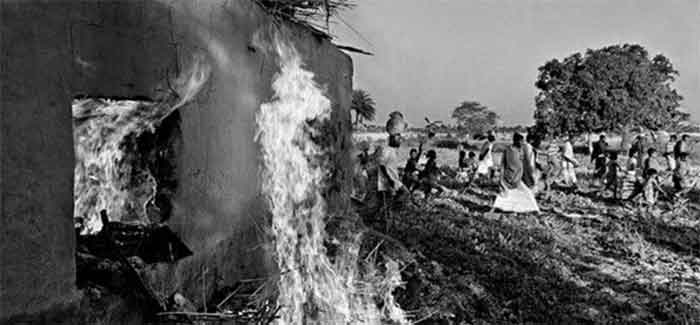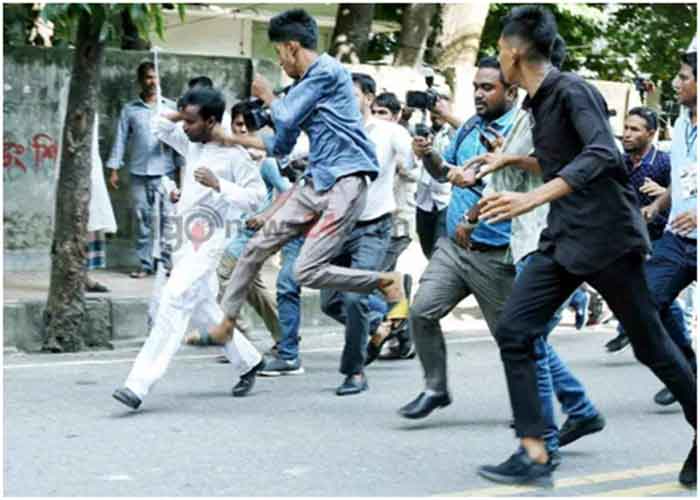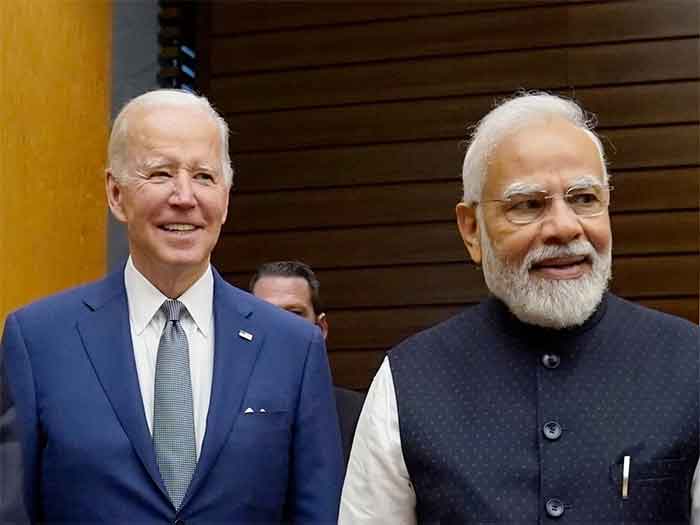
Sheikh Mujibur Rehman was not just the first President of Bangladesh. Called Banglabandhu and Father of the Nation, he had played a very courageous role in resisting domination and repression of his people, leading the Awami League to victory in 167 out of 169 seats parliamentary seats contested n 1970-71, then being imprisoned, and returning to his beloved people only after the new nation of Bangladesh had been born and Pakistan had been defeated, with 90000 prisoners taken.
On return he announced that the new nation will be built on a foundation of democracy, socialism and secularism.
If this vision had succeeded it would have had much wider impact, contributing much not just to immediate welfare but also to the longer-term progress of the troubled South Asian region. But this was not to be and a little more than three years later , on 15 August 1975, some younger army officers attacked the Banglabandhu residence in the early hours, killing the President, his wife, their sons and daughters-in-law and servants. A son who was an army officer was also killed. A more senior army officer who hastily rushed to prevent the slaughter was also shot dead. Other attackers raided the house of another minister and killed him and all family members.
The youngest 10 year old son of Mujib was not spared either. Much later when one of the attackers was asked why the child at least was not spared, he said with cruel arrogance that they were keen to wipe out the dynasty.
Daughter Sheikh Hasina, present Prime Minister of Bangladesh ,could escape only because she was away in W.Germany at that time with her sister. The two then took shelter in India.
Four prominent persons associated most closely with the creation of Bangladesh, including a former Prime Minister, were imprisoned and killed in the first week of November.
As military rule was imposed soon in Bangladesh and a wave of coups and conspiracies ensued, these murderers were rewarded with plum civilian posts , particularly in foreign service. An indemnity law was passed to give them legal protection.
It was only when Sheiekh Hasina won elections in 1996 and became the Prime Minister that the indemnity law could be repealed. 12 persons were convicted for the assassination and given the death sentence by a Dhaka court. By then most had escaped , using foreign connections, and others appealed in higher judiciary. It took a long time to hang six of them , one of them as late as 2020, one died anyway and the remaining are probably still in various forms of hiding.
However the most basic question of what was behind the killing spree and the entire plan for killing and takeover has still not been answered in a satisfactory way publicly, although in private conversation of course much has been said and many people understand what really happened.
The journalist who is credited with the most detailed investigation and writing on this issue is Lawrence Lifschultz, former South Asia Correspondent of the Far Eastern Economic Review whose writings on this issue also appeared in the Economic and Political Weekly. In his book Bangladesh—the Unfinished Revolution as well as in other writings , he has pointed out that the CIA station staff was involved in the killing of Banglabandhu. They had been meeting some of the conspirators before the killing.
This allegation was widely made first by some left parties in India, but it is the careful research of Lifschultz which provided the important details. Last year ( in 2020), Lifschultz again emphasized the need for exploring this aspect further.
He also pointed to the important role of Ziaur Rehman. As is well-known, Zia, a senior army officer at the time of the killings, extracted the most gains from these by first becoming the army general and then the President of the country in 1977, till he himself was killed by other army men in 1981. Lifschultz also described Ziaur Rehman as a psychopath in his persistence with violence and in his betrayal of various persons after using them to his advantage.
Although Zia highlighted his own role in liberation of Bangladesh when success appeared near, later evidence indicated that he had maintained his relationship with Pakistan all along. He had also been meeting CIA staff before the killing of Banglabandhu. A meeting between him and a main CIA operator had been arranged at a specially set-up ( for the purpose of this meeting ) dinner at the home of a prominent businessman.
The crucial role of Zia was to ensure that the Army did not act against the killers after the killing. Even though Zia himself was to remain in the background , his peculiar behavior soon after the killings also betrayed his leanings. As Lifschultz said last year, the killers would not have moved without the backing of Zia and Zia would not moved without the backing of the Americans. However it should be stated in all fairness to the US Ambassador in Dhaka ( at that time ) Eugene Boster that he did not approve at all of the coup and the killings . However the CIA staff moved ahead despite his protest and refusal.
Last year before the sixth killer Abdul Majed was hanged, he also reportedly confirmed the crucial role of Zia in the killing and the coup.
Soon after he became President, Ziaur Rehman made haste to undo the legacy of Mujibur , clamped down on secularism,socialism and democracy, and promoted the revival of the same fundamentalist forces which had collaborated with Pakistan in the most cruel atrocities and torture on their own people. He was equally quick in improving relations with the USA, its western allies and China, while cooling off towards India and the Soviet Union.
The USA under the guard of Nixon and Kissinger had all along supported Yahya Khan when he unleashed genocide in Bangladesh, ignoring and overruling advice of its own diplomats in the region, making illegal transfers of arms to Pakistan, even sending its nuclear submarine to Bay of Bengal. Nixon shower high praise on Yahya and at the same time also used the most offensive language against the Indian Prime Minister Mrs. Indira Gandhi which cannot be printed.
China throughout extended full support to Yahya Khan, who had emerged as a link in the coming closer of the US and China at that time. Once Ziaur became President, the Chinese leadership rushed to cosy up to Bangladesh in many ways.
When the USA could not check the liberation of Bangladesh, it appears that the CIA embarked on two simultaneous projects. One of this was to oust Mujibur Rehman at all costs as soon as possible, the second was to make things as difficult as possible for Mrs. Gandhi and her leadership of India ( with help from Pakistan). Faced with this new challenge, unfortunately the two leaders could not repeat the name greatness as they had both shown in very recent times.
The rest, as they say, is history.
Bharat Dogra is a journalist and author. His recent books include Man Over Machine and Planet in Peril.
GET COUNTERCURRENTS DAILY NEWSLETTER STRAIGHT TO YOUR INBOX
















































